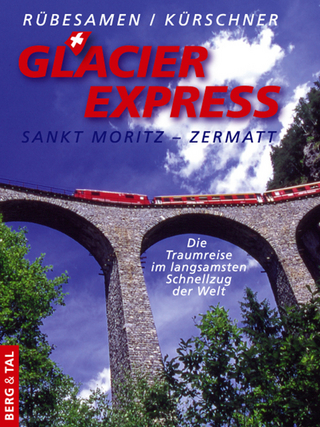
British Rail Motive Power in the 1980s
Seiten
2023
Amberley Publishing (Verlag)
978-1-3981-0922-3 (ISBN)
Amberley Publishing (Verlag)
978-1-3981-0922-3 (ISBN)
Explore this wonderful selection of photographs celebrating the British Rail's traction in the 1980s.
The 1980s were years of momentous change on Britain’s railways. At the dawn of the decade it was still possible to travel on a Sundays-only St Pancras to Manchester Piccadilly service that traversed the Woodhead route, or catch a Deltic-hauled express from York to London King’s Cross. The 1980 edition of Ian Allan’s Motive Power Combined Volume listed more than 3,700 diesel and electric locomotives. Slowly but surely over the following ten years, these familiar sights would begin to disappear. The Woodhead route and its twenty-seven-year-old fluorescent-lit tunnel was closed, the Deltics withdrawn, and hundreds of other diesel and electric locomotives taken out of service – most to be scrapped, with a precious few preserved. The first generation diesel multiple units began to be phased out and a new breed, the ‘Sprinter’, began to appear.
This book presents a collection of photographs of the motive power that characterised this decade of change, many featuring locations and infrastructure that, like the machines themselves, have gone forever.
The 1980s were years of momentous change on Britain’s railways. At the dawn of the decade it was still possible to travel on a Sundays-only St Pancras to Manchester Piccadilly service that traversed the Woodhead route, or catch a Deltic-hauled express from York to London King’s Cross. The 1980 edition of Ian Allan’s Motive Power Combined Volume listed more than 3,700 diesel and electric locomotives. Slowly but surely over the following ten years, these familiar sights would begin to disappear. The Woodhead route and its twenty-seven-year-old fluorescent-lit tunnel was closed, the Deltics withdrawn, and hundreds of other diesel and electric locomotives taken out of service – most to be scrapped, with a precious few preserved. The first generation diesel multiple units began to be phased out and a new breed, the ‘Sprinter’, began to appear.
This book presents a collection of photographs of the motive power that characterised this decade of change, many featuring locations and infrastructure that, like the machines themselves, have gone forever.
Andrew Walker was born in Barnsley in 1962 and grew up in close proximity to the Penistone branch and to the Class 37s that operated over the line on daily trip workings to and from Wath up to the mid-1980s. He began photographing railways in 1978 and has contributed to many railway publications including a number featuring the Woodhead route, which he photographed extensively during its closing years. Vaughan is a transport history author specialising in railways.
| Erscheinungsdatum | 16.02.2023 |
|---|---|
| Zusatzinfo | 180 Illustrations |
| Verlagsort | Chalford |
| Sprache | englisch |
| Maße | 165 x 234 mm |
| Gewicht | 313 g |
| Themenwelt | Natur / Technik ► Fahrzeuge / Flugzeuge / Schiffe ► Schienenfahrzeuge |
| Geschichte ► Allgemeine Geschichte ► Zeitgeschichte | |
| ISBN-10 | 1-3981-0922-3 / 1398109223 |
| ISBN-13 | 978-1-3981-0922-3 / 9781398109223 |
| Zustand | Neuware |
| Haben Sie eine Frage zum Produkt? |
Mehr entdecken
aus dem Bereich
aus dem Bereich
die Rhätische Bahn schreibt Geschichte
Buch | Hardcover (2023)
Edition Somedia (Verlag)
59,00 €
St. Moritz – Zermatt : die Traumreise im langsamsten Schnellzug der …
Buch | Hardcover (2023)
Verlag Berg & Tal
14,95 €
Betriebsmaschinendienst, Einsatz bei den Bahnbetriebswerken und …
Buch | Hardcover (2024)
EK-Verlag
54,00 €


